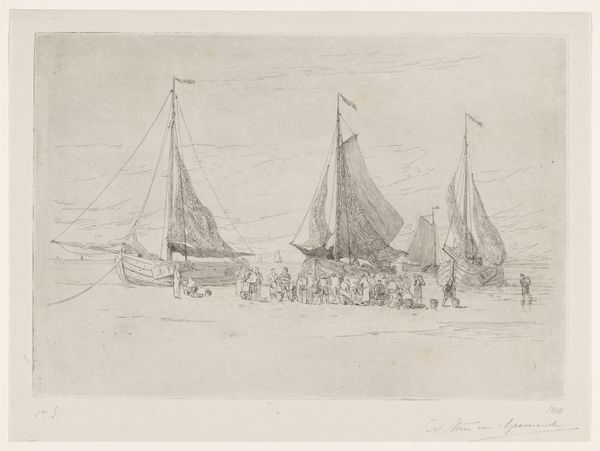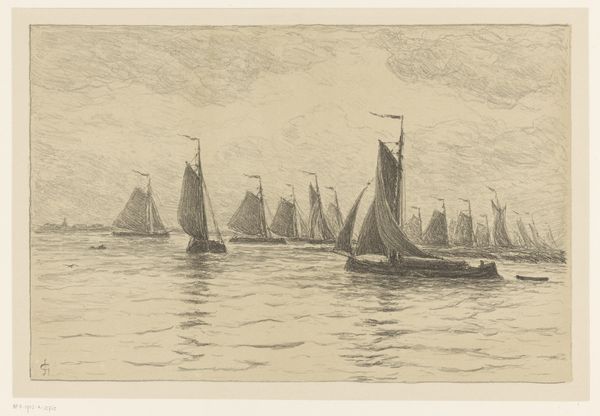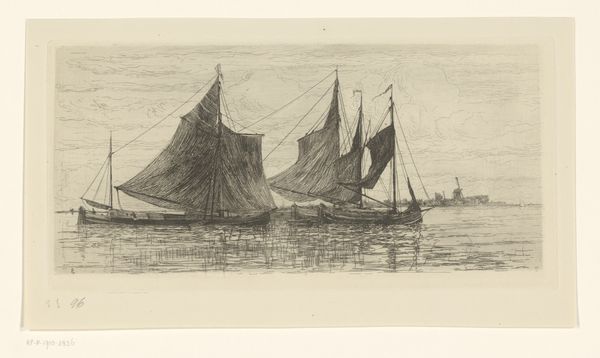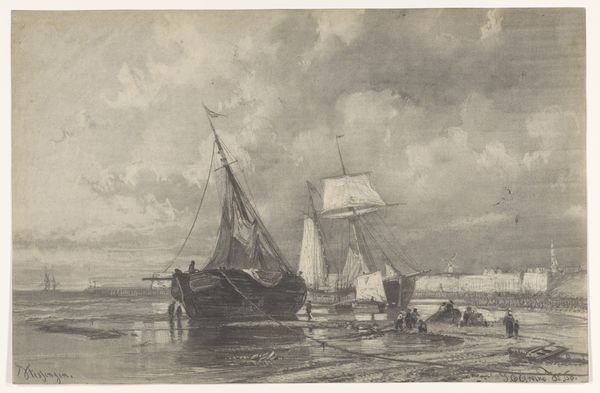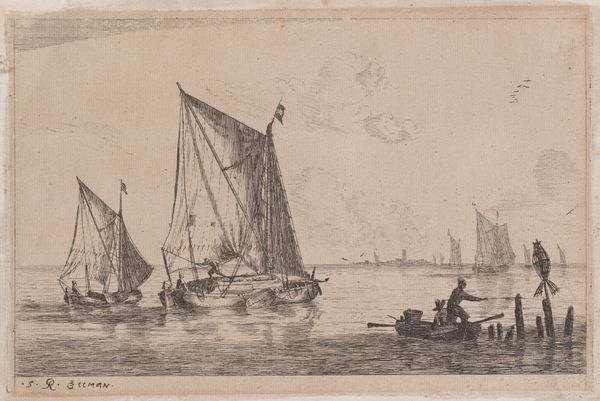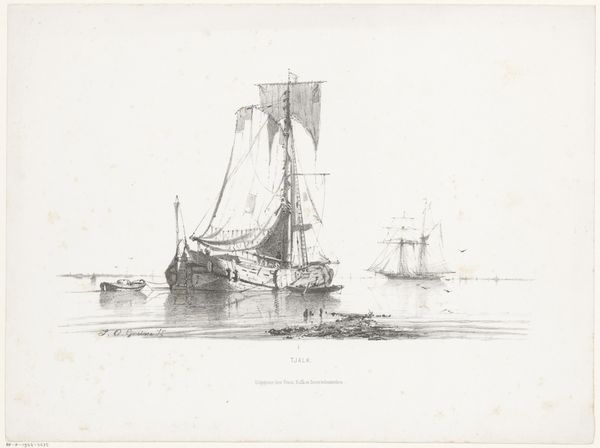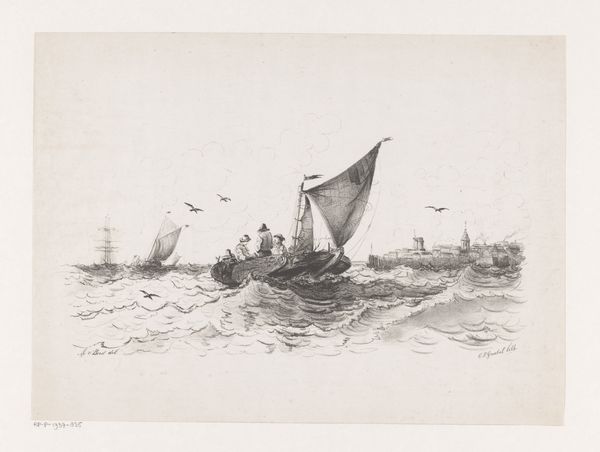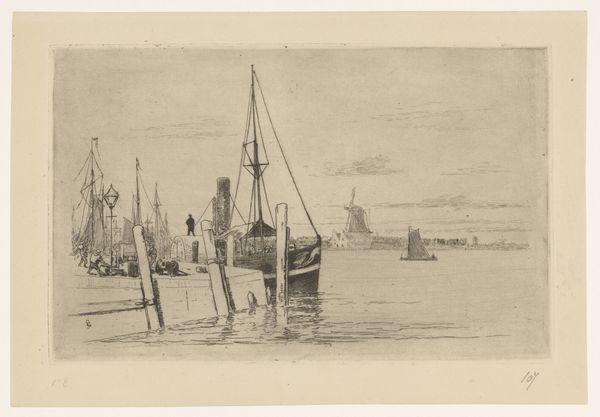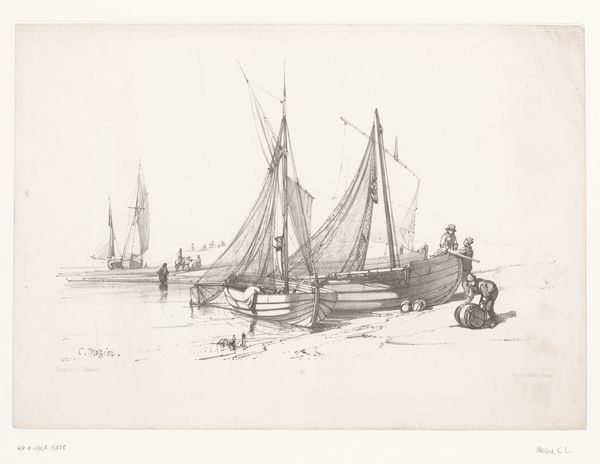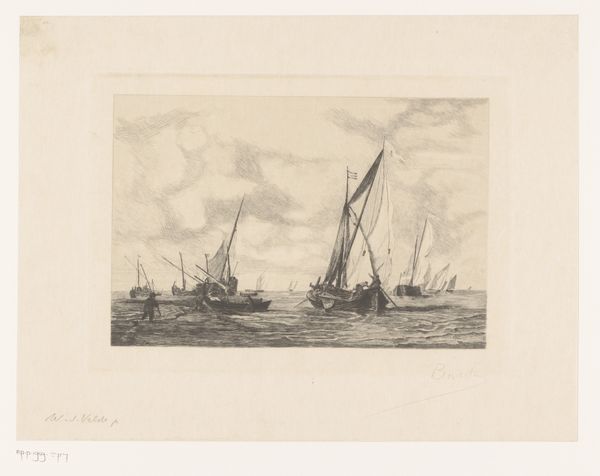
print, etching
#
dutch-golden-age
# print
#
impressionism
#
etching
#
landscape
#
etching
#
cityscape
#
genre-painting
#
realism
Dimensions: height 213 mm, width 353 mm
Copyright: Rijks Museum: Open Domain
Editor: Here we have Carel Nicolaas Storm van 's-Gravesande's "Visverkoop op het strand van Zandvoort," an etching from around 1880, housed at the Rijksmuseum. I find its depiction of daily life incredibly compelling, a kind of visual record of a community. What strikes you most about this piece? Curator: The bustle and trade, precisely. But I’m also drawn to consider the politics inherent in this seemingly simple scene. How do we understand the social hierarchy depicted here? Who profits from this labor, and what are the working conditions like for those involved in the fish trade? The almost blurry depiction flattens out any individuality of these workers. Editor: That's a great point. I hadn't thought about it in terms of power dynamics, focusing instead on the overall activity. Curator: Exactly, and consider the tradition of Dutch genre painting. These scenes often romanticize the working class, but we need to ask, who is this romanticization for? Is it for the wealthy patrons who buy these artworks, further distancing themselves from the reality of labor? Also, what do you observe about the position of women here? Are they centered or marginalized within the image? Editor: I see women both in the crowd and near what appears to be the offloading of the boats. Their role is not emphasized. Are you suggesting that this etching, intentionally or not, replicates existing social structures and power imbalances? Curator: Precisely. By examining these depictions through a critical lens, we can uncover the complex interplay between art, society, and power, and by recognizing these encoded inequalities in the Dutch Golden Age it lets us recognize their impact today. Editor: This has completely changed my perception. I now see beyond the surface and consider the broader socio-political context. Curator: Which will influence your appreciation, but also hopefully, your drive to discuss the contemporary context of these inequalities with others.
Comments
No comments
Be the first to comment and join the conversation on the ultimate creative platform.
